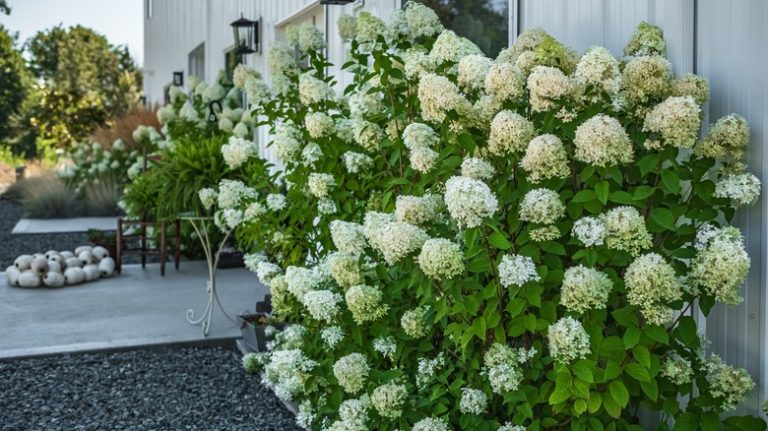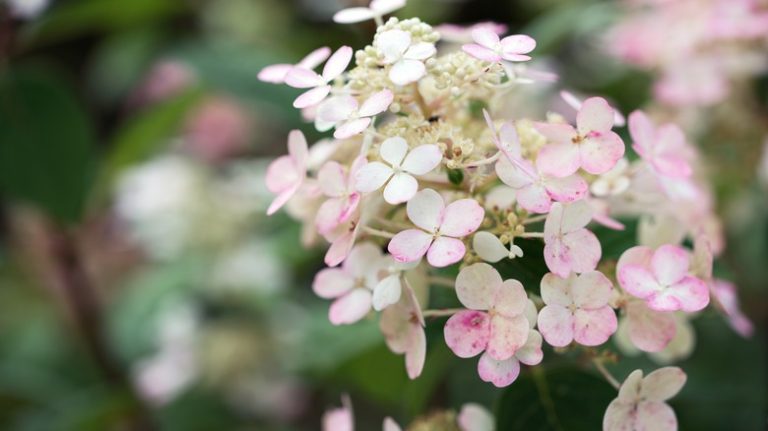If you have noticed that the leaves on your roses are turning yellow, there could be a number of reasons for this. In this article, we will talk about 6 common causes of yellowing rose leaves and what you can do to prevent or treat them. Let’s dive in!
1. Lack of nutrients: Roses are heavy feeders and require optimal levels of nutrients to thrive. If your soil isn’t rich enough in nutrients, it can result in yellowing leaves. Adjusting the nutrient levels by introducing a well-rotted compost or suitable fertilizer every 4-6 weeks can help improve the overall health of your roses.
2. Overwatering: While roses need moist soil, overwatering can lead to waterlogged roots and poor drainage, causing the leaves to turn yellow. To avoid this, make sure the soil is well-drained and water your roses only when the top inch of soil is dry.
3. Underwatering: On the other hand, not providing enough water can also cause yellowing leaves. Roses need about 1-2 inches of water per week, and even more during hot and dry weather. Therefore, if you’re not watering your roses enough, it’s likely that they are suffering from dehydration.
4. Diseases and pests: Some diseases and pests can also lead to yellowing of rose leaves. Mould and fungus spores, such as black spot and powdery mildew, can cause the leaves to turn yellow and even fall off. Treating the infestation and keeping the area around your roses clean can help prevent these diseases from spreading.
5. Sunburned leaves: Roses that are grown in shaded areas may experience sunburn, which can result in yellowing of the leaves. To avoid this, make sure your roses are planted in an area where they receive at least 6-8 hours of sunlight per day.
6. Nitrogen deficiency: A lack of nitrogen can also cause the leaves to turn yellow. Nitrogen is an important nutrient that plants need for healthy leaf and stem growth. Adding a nitrogen-rich fertilizer can help prevent this deficiency and promote the overall health of your roses.
In conclusion, yellowing leaves on your roses can be a consequence of various factors such as nutrient deficiencies, overwatering, diseases, pests, sunburn, or nitrogen deficiency. By following the tips mentioned in this article and taking proper care of your roses, you can ensure that they stay healthy and vibrant all season long.
Why Are My Rose Leaves Turning Yellow
If your rose leaves are turning yellow, it can be a sign that there is something wrong with your plant. Yellow leaves can be caused by a variety of factors, including nutrient deficiency, poor soil conditions, fungal infestation, or viral diseases.
One common cause of yellowing rose leaves is nutrient deficiency. Roses are heavy feeders and require enough nutrients to grow well. If the soil lacks essential nutrients like nitrogen, phosphorus, or potassium, the leaves may turn yellow. Applying a well-balanced fertiliser can help address this issue.
Poor soil conditions can also contribute to yellowing leaves. Roses prefer well-drained soils that are rich in organic matter. If the soil is compacted, poorly drained, or lacking in organic matter, the roots may not be able to take up enough nutrients, causing the leaves to turn yellow.
Fungal infestations can also lead to yellowing leaves. Fungal diseases like black spot and powdery mildew can cause yellow patches, spots, or a mosaic pattern on the leaves. Treating the plant with a suitable fungicide and improving air circulation around the plant can help prevent the spread of these diseases.
Another possible cause of yellowing rose leaves is viral diseases. Viruses like rose rosette virus and mosaic virus can cause yellowing, distorted growth, and leaf loss. Unfortunately, there is no cure for viral diseases, and affected plants should be removed to prevent further spreading.
Environmental factors like drought, heat, or excessive sunlight can also cause rose leaves to turn yellow. If your roses are not getting enough water, or if they are exposed to intense heat or direct sunlight for extended periods, the leaves may become yellow and dry. Providing enough water and placing the plant in a shaded area can help alleviate this issue.
To sum up, yellowing rose leaves can be caused by nutrient deficiency, poor soil conditions, fungal or viral infections, or environmental factors like drought or excessive sunlight. Identifying the underlying cause is essential for treating the problem and ensuring the health of your rose bushes.
Here are some key takeaways on why your rose leaves may be turning yellow:
- Nutrient deficiency can cause yellowing leaves. Applying a well-balanced fertiliser helps address this issue.
- Poor soil conditions like poor drainage or lack of organic matter can contribute to yellow leaves.
- Fungal infestations, such as black spot and powdery mildew, can cause yellow patches or a mosaic pattern on the leaves.
- Viral diseases like rose rosette virus and mosaic virus can cause yellowing, distorted growth, and leaf loss.
- Environmental factors like drought, heat, or excessive sunlight can also lead to yellowing leaves.
- Identifying the underlying cause is important for treating the problem and maintaining the health of your rose bushes.
10 Common Causes of Yellow Leaves in Roses
Yellow leaves in roses can be a sign of various problems. Here are 10 common causes to look out for:
- Drought or Underwatering: Some rose varieties, like the Mollie Allgood, are more prone to drought stress. If your roses are not receiving enough water, their leaves may turn yellow.
- Poor Soil Conditions: Roses need well-drained soils to thrive. If the soil is too compacted, lacks nutrients, or has a high clay content, the roots may struggle to access water and nutrients, causing yellowing leaves.
- Overwatering or Waterlogged Plants: While roses do need regular watering, overwatering or waterlogged conditions can suffocate the roots and lead to yellowing leaves. Make sure the soil is moist but not saturated.
- Frost Damage: If your roses have been exposed to frost, their leaves may turn yellow as a consequence. Protect them from cold temperatures, especially during winter.
- Fungal Diseases: Various fungal diseases can cause yellowing leaves in roses. Look for signs of powdery mildew, black spot, or rose mosaic virus. Treat these diseases promptly to prevent further leaf damage.
- Nutrient Deficiencies: A lack of essential nutrients like nitrogen can lead to yellowing leaves. Use a soil gauge to determine the nutrient levels in your soil and adjust accordingly.
- Poor Pruning or Training: Incorrect pruning or training techniques can disrupt the health and structure of rose bushes, resulting in yellow leaves. Make sure to follow proper pruning guidelines.
- Excessive Heat or Sun Exposure: Roses that are planted in sunnier locations or exposed to extreme heat conditions may experience yellowing leaves. Provide some shade or relocate them to a more suitable spot.
- Pest Infestations: Certain pests, like aphids or spider mites, can cause yellowing leaves in roses. Inspect your plants regularly and take appropriate measures to control pests.
- Poor Drainage: If water is not draining properly from the root zone, it can lead to water buildup and root rot, resulting in yellowing leaves. Ensure that the planting area has proper drainage.
If your rose leaves are turning yellow, it is essential to identify the underlying cause and address it accordingly. By taking proper care of your roses and providing the necessary conditions, you can keep your rose bushes healthy and vibrant. Remember to water them adequately, provide sufficient nutrients, and protect them from unfavorable environmental conditions.
1 Black Spot
Black spot is a common fungal disease that affects rose bushes. It causes the rose leaves to yellow and develop black spots, which can lead to the leaves eventually falling off. Black spot is typically caused by waterlogged or poorly drained soil, as well as high humidity. If your rose bush is planted in an area with inadequate drainage or is overwatered, it is more likely to develop black spot.
The disease is caused by the fungus Diplocarpon rosae and can spread easily from infected plants to healthy ones. It thrives in warm and humid conditions, making it a common problem in many regions.
To prevent black spot, it is important to maintain good air circulation around the plant by properly spacing the roses and regularly pruning them. Avoid wetting the foliage when watering, as the moisture can promote the growth of the fungus. Water the base of the plant early in the day, allowing the leaves to dry quickly and reducing the risk of black spot.
If black spot has already affected your roses, there are treatment options available. Fungicides can be used to control the disease, but it is important to follow the instructions carefully and apply them at the right time. Additionally, removing and destroying infected leaves can help prevent the spread of black spot.
Overall, preventing black spot involves maintaining a healthy rose bush and providing the right growing conditions. Well-drained soil, adequate spacing, and proper watering techniques are key to preventing this disease. Regularly inspecting your roses for signs of black spot and addressing any issues early on can help keep your plants healthy and thriving.
2 Drought Conditions
Drought conditions can prevent rose plants from receiving enough water to thrive. When the soil becomes dry, the consequences can be detrimental to the health of the plant. Without sufficient moisture, the rose leaves may start yellowing as a result of dehydration. This can also inhibit the absorption of nutrients, leading to potential imbalances and deficiencies.
One key indicator of drought conditions is the appearance of mosaic-like patterns on the leaves. This is caused by the heat and lack of moisture, which can create a breeding ground for fungal spores. Additionally, the yellowing of the leaves may be a gauge that the plant is not receiving enough watering.
| Takeaways: |
|---|
| 1. Water the rose plants regularly to avoid drought conditions. |
| 2. Ensure the plants receive enough moisture to maintain their optimal health. |
| 3. Avoid overwatering the plants, as this can lead to root rot and other issues. |
| 4. Consider using well-rotted compost or mulch to help retain moisture in the soil. |
| 5. If you suspect drought conditions, monitor the soil moisture levels and adjust watering accordingly. |
It is important to note that underwatering can also be a factor in yellowing rose leaves. If the soil pH level is too high (over 7), it can prevent the plant from absorbing necessary nutrients. Use a pH gauge to determine the acidity level of the soil and adjust as needed. Additionally, shaded or poorly drained areas can cause the soil to dry out more quickly, so be mindful of the plant’s environmental conditions.
If drought conditions or underwatering are the root cause of yellowing leaves, it is important to address the issue promptly. Adjust the watering schedule, consider adding fertilizers or soil amendments to provide the necessary nutrients, and ensure the plant is in an optimal environment for growth. If left unchecked, drought conditions can lead to further stress on the rose plant, poor flowering, and potential death of the shrub.
For more information on how to care for your rose plants and prevent yellowing leaves, refer to the other sections of this article.



